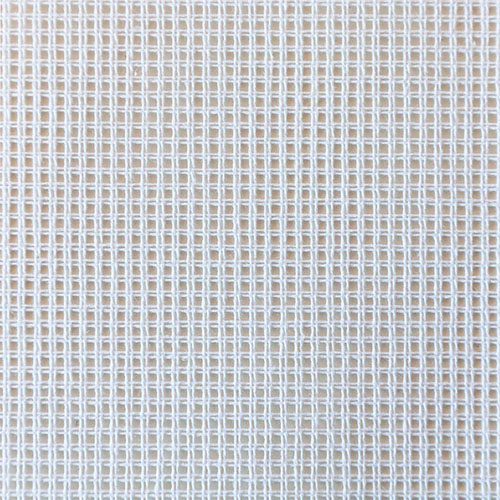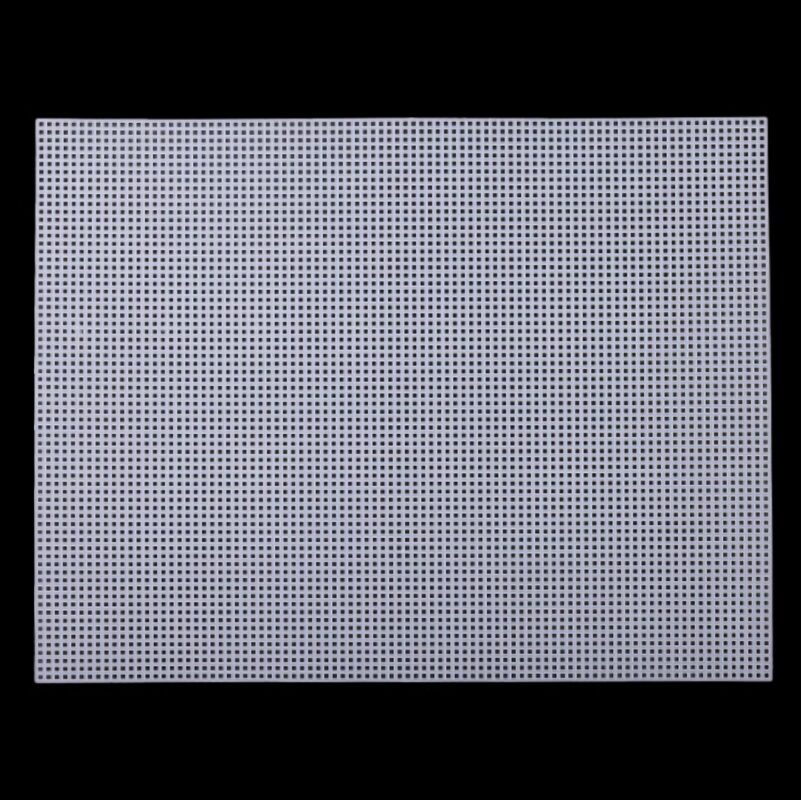Blog
What Kind of The Needlepoint Canvas Is The Best?
Needlepoint Canvases: What Type of Needlepoint Canvas Do You Need? Ultimate Guide to Selecting the Perfect Canvas
With needlepoint, artists can make beautiful and colorful designs on fabric; needlepoint work is a timeless craft. Choosing a needlepoint canvas is one of the most important decisions you will need to make in your needlepoint journey…whether you are new or an experienced stitcher. With hundreds of canvases to pick from, you should know the different kinds of canvases, what mesh count means for your project, and be able to choose the right canvas for your purpose. In this ultimate guide, we will guide you through the most important factors that could affect your canvas selection so you can pick wisely.
Tip: Know Your Needlepoint Canvas Types
You know that the success or failure of your needlepoint project depends upon canvas selection. The choice in canvas will affect both how easy your stitching will be, as well as the final look and durability of your finished work. Here are the different types of needlepoint canvases that are frequently utilized and most suited for.

Mono Canvas: Go-To for Most of the Things
The most frequently used type of canvas you will probably see is mono needlepoint canvas, which is relatively strong but also very flexible! This is a durable single-thread weave canvas that has good wear and tear, great for most needlepoint designs. Mono canvas comes in different mesh sizes (generally from 10 to 18 mesh). Mesh size is measured in threads per inch, and smaller numbers indicate wider openings.
- Best For: Needlepoint, fine detail designs, and upholstery
- Mesh Size: 10 (bigger holes) to 18 (smaller holes, finest detail)
- Needle Threads: Suited for different threads ranging from coarse wool to silk.
Why Choose Mono Canvas?
- Versatility: Suitable for projects that may need a change of stitch direction and/or thread thickness.
- Variety: Comes in different mesh sizes for intricate and large designs.
- Toughness: Durable for different kinds of sewing projects ranging from upholstery to wall hangings.

Durable Alternative for Large Projects: Interlock Canvas
Another common type is interlock needlepoint canvas, which has threads interwoven together, giving more stability than mono canvas. This brings a more rigid structure — the intersections of the threads are twisted/turned together. Interlock canvas offers less flexibility than mono canvas but is a more stable surface for large and complex designs, especially those that require close tension.
- Best For: Oversized projects like tapestries, pillows, and other fill-in-the-blank rugs.
- Mesh Size: Same sizes as the mono canvas (10, 12)
- Threads: Ideally thicker threads and yarns go on this one.
Why Choose Interlock Canvas?
- Stability: Stiffer — suited for larger projects or pieces under a lot of tension.
- Strength: Helps add a solid foundation for complicated stitches and larger patterns.
- Cuts into Vibrant Shapes: Great for projects that require to be cut out in specific shapes.

Penelope Canvas: Your Premium Go-to for Detail Colors
Penelope needlepoint canvas is a double-weave, with two threads twisted together to form a slightly finer mesh. Such a canvas is especially perfect for intricate designs and petit point, which incorporates very tiny stitches to achieve detail and beauty. Penelope canvas typically comes in 10/20 mesh — 10 holes per inch for the larger holes and 20 holes when counting all the tiny holes.
- Best For: Heirloom Quality Projects, Fine Art Needlepoint, and Heavy Petit Point Work
- Mesh Size: For detail and complexity — 10/20 mesh
- Compatibility with Threads: Compatible with fine threads such as silk or cotton.
Why Choose Penelope Canvas?
- High Detail: Great for smaller work and fine details.
- Versatility: Can be sewn with one or two threads for different effects.
- Heirloom Quality: Holds up well; great for detailed needlepoint projects.

Plastic Canvas – The Ideal Beginner and 3D Material
Plastic canvas is a rigid perforated plastic material that works incredibly well for small-scale projects. It’s often considered a great option for beginners in stitching. This sturdy yet lightweight material makes it easy to work with for basic designs and even decorative ornaments as well as three-dimensional needlepoint pieces. Plastic canvas usually has larger holes, available in 7-count and 10-count mesh size, making it suitable for thicker threads.
- Frequency of Use: For small projects such as coasters, ornaments, keychains, and beginner-friendly crafts.
- Hole Size: Usually 7 to 10 mesh for coarse holes.
- Needle Threads: Medium or worsted-weight threads work better than thin yarns for this one.
Why Choose Plastic Canvas?
- Accessible: Straightforward to use, even for needlepoint novices.
- Solid: Retains its shape nicely, ideal for 3D forms.
- Inexpensive: A cost-effective option for smaller projects and crafts.
How to Select the Appropriate Needlepoint Canvas: Some Considerations
Choosing a needlepoint canvas goes beyond just choosing the type of canvas. There are a few factors that will affect your stitching experience and the final product, so you should keep those in mind.
Mesh Count — The Main Factor for Detailing & Texture
Mesh count, or holes per inch, is crucial for determining the amount of detail and texture your design will have. Generally, larger, less detailed designs are better on lower mesh counts (like 10-12 mesh), whereas fine intricate work is much better suited to a higher mesh count (18–24 mesh).
- 10-12 Mesh: Ideal for big, heavyweight projects and fast work.
- 14-18 Mesh: For most Needlepoint Projects, this mesh lies between smaller size and higher detail.
- 20-24 Mesh: Suitable for finer, high-detail designs.
Project Size and Thread Type
Depending on the size of your project and the type of thread you plan to use, you can choose between different types of canvas. Larger holes accommodate thicker threads (such as wool), while smaller holes are better for finer threads (like silk or cotton). Stitching with the wrong mesh size can cause unnecessary friction and affect the fit of your thread.
Complexity of the Project and Expertise Level
If you are just starting out, it is recommended to use a more manageable type of canvas, such as plastic canvas or mono canvas with a low mesh count. Penelope canvas has a finer mesh and is designed for more detailed needlework, so it is best suited for experienced stitchers. Depending on your design complexity, your best canvas choice will vary.
FAQ About Needlepoint Canvases
So, Mono vs. Interlock Needlepoint Canvas — What’s the Difference?
Mono canvas uses a one-thread weave, which is very flexible and great for various stitches and designs. The twisted threads at the intersection of interlock canvas make it denser and lend higher rigidity, making it ideal for larger projects that require stability.
What Mesh Count is Best for Beginners?
10 to 12 mesh canvases are perfect for novices. They have bigger holes, making it easier to work and allowing for faster stitching. Larger mesh counts help build confidence before progressing to more complex patterns.
Is it OK to Use Any Thread with Any Kind of Canvas?
Not all threads are suitable for all canvases. Thicker threads, such as wool, should be reserved for large mesh sizes (10-12 mesh), while finer threads like silk or cotton are better suited for smaller mesh sizes (18 mesh or above).
Is it Possible to Cut My Needlepoint Canvas Into Any Shape?
Interlock canvas is especially useful for projects that require cutting your canvas into specific shapes. It’s highly sculptural, even when cut with shears. However, you might want to tape or edge-finish the edges to prevent fraying.
Canvas Scratch for Detail Work: Which is Best?
Penelope canvas is great for detailed work. The double weave feature allows very small, fine stitches to be worked, making it perfect for intricate patterns.
Final Word: Selecting a Suitable Needlepoint Canvas for Your Upcoming Project
Choosing the right canvas for your needlepoint is one of the most important steps to ensure your project goes off without a hitch. Paying attention to mesh count, canvas type, and the thread you plan on using will ensure a pleasant stitching experience and a beautiful finished piece. From a tiny bauble to a full tapestry, selecting the appropriate canvas will guide you toward your creative masterpiece.


